Saddling a Seat –
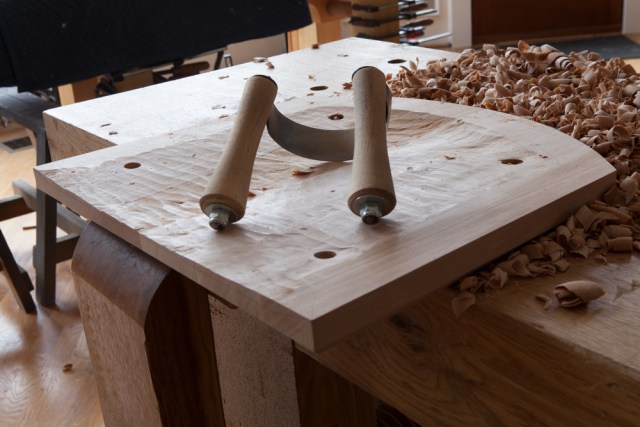
There’s almost certainly a sort of Reinheitsgebot for chairmakers. If you don’t use hand tools at every stage, you receive one evil eye.
Truth is, lots of chairmakers I know use power tools at some stage of the process. Many use a band saw. Others use an angle grinder to roughly shape their seats. Many use electric lathes. And a few – gasp – use sandpaper.
Me, I’m indifferent to this claptrap. I like to use the tools I like to use. I avoid the tools I dislike. Simple.
So this is how I saddle my seats.
I don’t have an adze. Why? I don’t know; it just never happened. Sure, I’ve tried a few adzes here and there at woodworking shows, but I’ve always started saddling my seats with a scorp (mine is from Barr Specialty Tools). It takes longer than if I had an adze, but I’m happy I don’t have to take care of an additional tool.
So after marking out the saddle I begin by traversing the seat with the scorp. Traversing in chairmaking is not like traversing with a jack plane. You don’t work with the cutter 90° to the grain.
Instead you pull the tool directly across the grain, but you angle its cutter in the direction the grain is flowing in the board. If this sounds odd to you, try it with a jack plane. Say you are traversing a board where the grain directions runs from right to left. The best plan is to push the tool directly across the grain of the board but angle it 30° to the left.
Try it and it will click.
I usually bottom my seats to be about 5/8” deep at the deepest point near the back of the seat. Then I saddle it about 3/8” near the front of the seat.
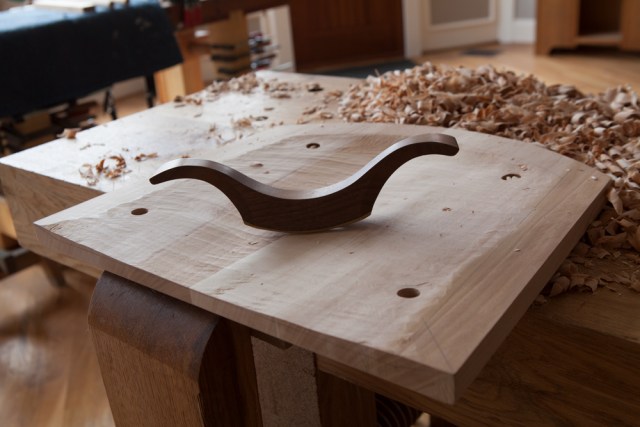
After I get it as clean as possible with a scorp, I switch to a travisher (mine is from Claire Minihan). Again, I work across the grain with the tool angled in the direction of the grain. I take lighter and lighter cuts as I work. When I can’t refine the surface any more, I switch to a card scraper.
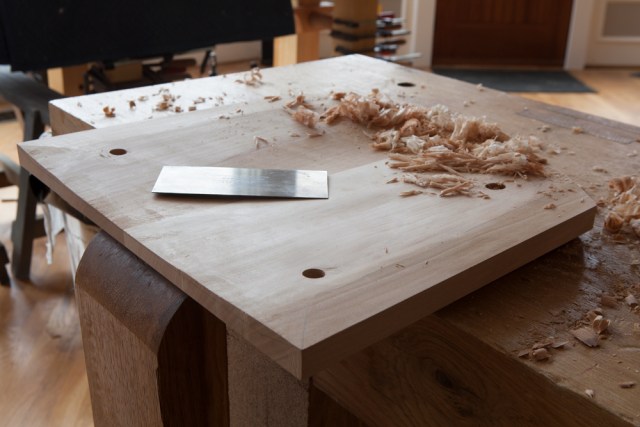
I scrape out the tops of the dawks and try to remove any high spots my fingers can feel. I scrape and scrape until I can’t get it looking any better.
Then, finally, I wrap a piece of #180-grit sandpaper around a cork sanding block and try to refine the surface even more. After I scuff up the surface entirely with the sandpaper, I come back with a scraper and remove the sanding scratches.
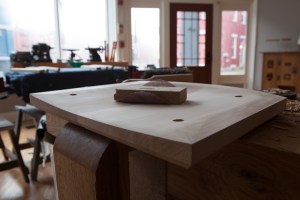
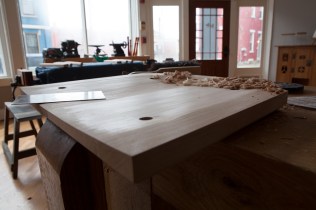
The last 15 minutes of the process is me switching back and forth between a scraper and sandpaper, trying to get it as perfect as possible.
Eventually I give up – never satisfied with the final surface. But that’s typical.
— Christopher Schwarz




